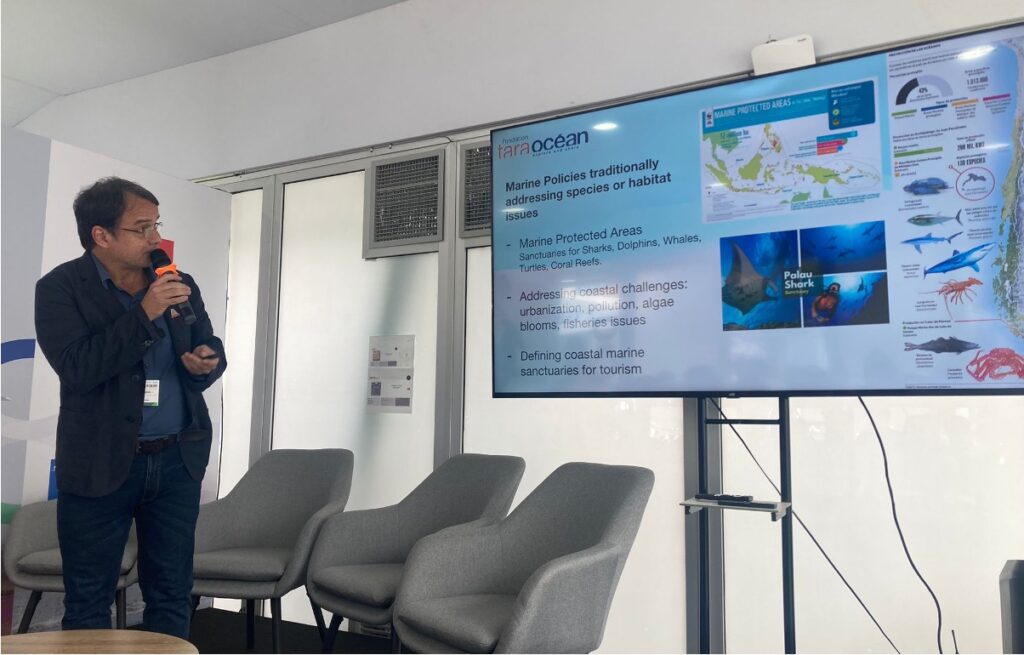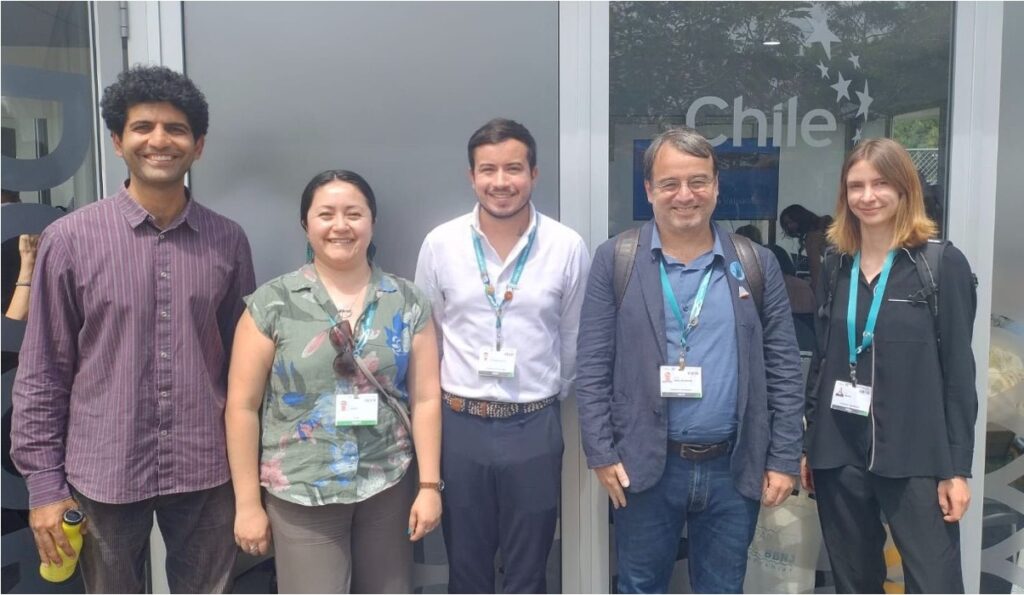Dynamic oceans
First presented within the policy brief are the diverse – and at times inconsistent – conceptualizations of the ocean and marine life that currently exist, such as an inexhaustible resource but also a limited resource. “Ocean ecosystems are highly dynamic, yet the temporal and dynamic parameters that describe the ocean’s fluid and changing nature are generally neglected in ocean policy,” explains Roberto Casati, CNRS research director, professor at EHESS and director of the Institut Jean Nicod. “A reinterpretation of the ocean that moves beyond static spatial biases is needed in order to incorporate temporal and dynamic aspects into future ocean policies.”
MPA review
Next comes a review of existing marine conservation strategies, with a focus on Marine Protected Areas (MPAs). “The CBD 30×30 target aims to protect at least 30% of the world’s ocean by 2030. Though MPAs are widely used, no consensus exists on how to measure the effectiveness or efficiency of the strategy,” explains Julian Esteban-Cantillo, BIOcean5D PhD student at the Institut Jean Nicod. “MPA success is measured using a limited range of indicators that insufficiently cover important biophysical, socio-economic and governance aspects.” Recommendations on how to improve marine conservation strategies highlight the fundamental importance of involving local communities, ensuring societal needs are taken into account and cultural differences respected with ethical, transparent funding and governance.
 André Abreu presenting during a COP16 Blue Zone side event at the Chile Pavillion, Cali, Colombia. Credit: Eva Wanek.
André Abreu presenting during a COP16 Blue Zone side event at the Chile Pavillion, Cali, Colombia. Credit: Eva Wanek.
Marine biodiversity: a balanced definition
The definition of marine biodiversity in current conservation efforts is predominantly based on phylogenetic diversity that emphasises the preservation of a species’ evolutionary history and genetic variability, while often overlooking functional diversity. “The integration of functional diversity, that highlights species’ ecological roles and functions within ecosystems, would optimise the long-term sustainability of marine biodiversity,” explains Umer Gurchani, BIOcean5D postdoctoral researcher at the Institut Jean Nicod. “A biodiversity index that includes both concepts results in policies that are more adaptive and effective due to the balance created between immediate ecosystem services (functional diversity) and long-term evolutionary potential (phylogenetic diversity).”
Economic valuation of marine ecosystem services
The ocean provides direct and indirect benefits, such as fishing, recreation and carbon sequestration. “The economic valuation of these coastal and marine ecosystem services is rare and complex, but has been demonstrated to have high potential for conservation efforts,” explains Eva Wanek, BIOcean5D postdoctoral researcher at the Institut Jean Nicod. “In this policy brief, we present two innovative approaches to value ecosystem services: ecological-economic modelling and deliberative valuation.”
 The panellists of the COP16 Blue Zone side event at the Chile Pavillion, Cali, Colombia, (from left to right): Umer Gurchani, Laura Jiménez, Julian Esteban-Cantillo, André Abreu and Eva Wanek. Credit: Laura Jiménez.
The panellists of the COP16 Blue Zone side event at the Chile Pavillion, Cali, Colombia, (from left to right): Umer Gurchani, Laura Jiménez, Julian Esteban-Cantillo, André Abreu and Eva Wanek. Credit: Laura Jiménez.
Concluding proposals
Finally, two proposals are presented: the Key Ocean Planktonic Areas (KOPAS) initiative aims to develop legally-binding recognition and protection of areas of intense and essential ecosystem services by plankton, such as seasonal blooms. “This proposal aims to leverage all available resources and compile them into accessible and research-informed numerical models to guide policy-makers,” explains Damien Eveillard, professor at Nantes Université and leader of BIOcean5D’s 4th work package that covers the development of new theories for marine biodiversity, ecosystem function and their relationships.
The second proposal describes a model for the development of Intellectual Property Rights for marine ecosystems, in addition to legal protection of the right of marine ecosystems to maintain ecological integrity. “Marine ecosystems contribute to human survival yet this contribution is completely ignored by our legal frameworks,” explains Sacha Bourgeois-Gironde, professor at Université Paris-Panthéon-Assas and leader of BIOcean5D’s work package 6 that aims to assess the values and rights of marine ecosystems, for improved protective strategies. “I work in BIOcean5D on new legal tools and frameworks to extend marine protection by introducing recognition of the rights of nature, such as the right to ecological integrity.”
 ECR co-authors with the policy brief presented at 2024 UNCBD COP16, Cali (from left to right): Eva Wanek, Umer Gurchani and Julian Esteban-Cantillo. Credit: Julian Esteban-Cantillo.
ECR co-authors with the policy brief presented at 2024 UNCBD COP16, Cali (from left to right): Eva Wanek, Umer Gurchani and Julian Esteban-Cantillo. Credit: Julian Esteban-Cantillo.
Next generation marine conservation
Three early career researchers will represent BIOcean5D at UNCBD COP16: a valuable platform to connect, network and promote their work, research institutions, BIOcean5D and more generally, their vision for marine conservation with decision-makers and scientists from around the world. “Bridging the gap between science and policy is complex and the experience of working on this policy brief and preparing for the most important biodiversity convention in the world has certainly improved my skills and perspective in the domain,” explains Gurchani. For Wanek, the experience has deepened her interest in science-to-policy communication: “The intersection of science and policy is an area with immense potential impact, and I hope to continue to focus on this area in the future.” As a Colombian living in Europe, the conference resonates personally with Esteban-Cantillo: “Colombia is one of the most biodiverse countries in the world and I’m delighted to bring the important science of BIOcean5D to my home country.”